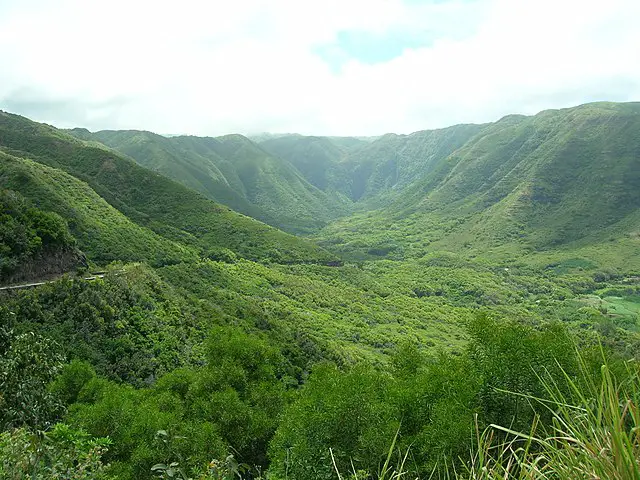
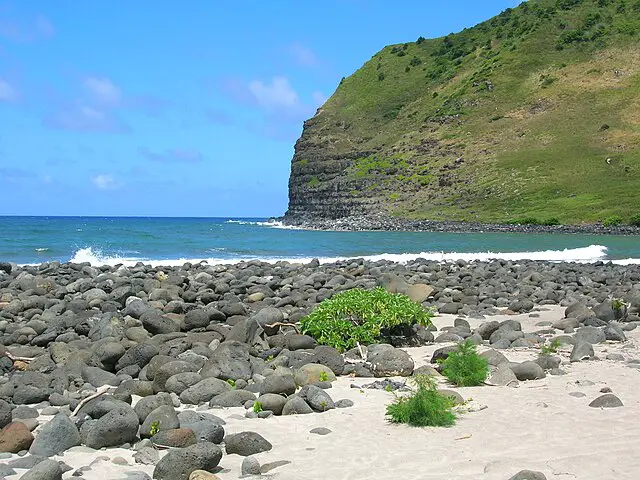
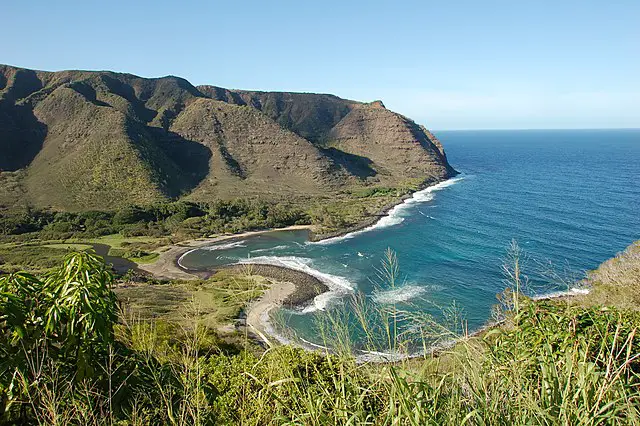
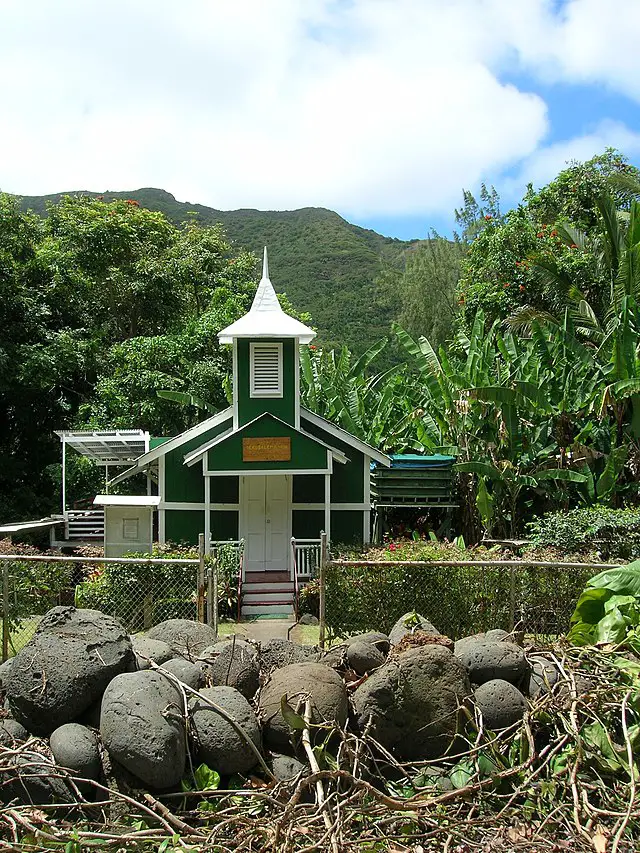
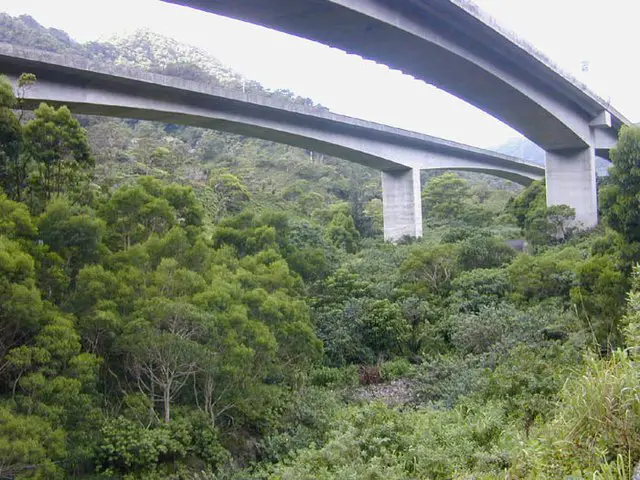
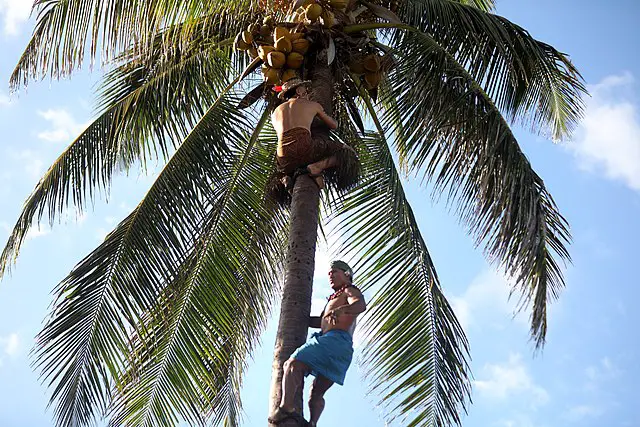
Halawa Valley is located on the eastern coast of Molokai, Hawaii. This lush and secluded valley is rich in natural beauty, cultural heritage, and offers visitors a unique and immersive experience. With its stunning landscapes, cascading waterfalls, and deep cultural significance, Halawa Valley is a must-visit destination for anyone seeking a deeper connection with the Hawaiian culture and the island’s natural wonders.
As you enter Halawa Valley, you’ll be captivated by its serene and untouched beauty. The valley is characterized by lush greenery, towering mountains, and pristine beaches. The air is filled with the scent of tropical flowers and the sound of rushing waterfalls that cascade down the cliffsides.
One of the main attractions in Halawa Valley is the Moa’ula Falls. This majestic waterfall is a sight to behold, with its cascading waters plunging into a crystal-clear pool below. To reach the falls, visitors can embark on a guided hike led by local guides who share their knowledge of the valley’s history, traditions, and legends. The hike takes you through tropical forests, across streams, and past ancient taro terraces, giving you a glimpse into the valley’s rich agricultural heritage.
Along the way, you’ll encounter various native plants and wildlife, and your guide will share stories about the valley’s cultural significance and the practices of traditional Hawaiian life. The journey to Moa’ula Falls is not just about the destination but also about immersing yourself in the spirit of aloha and connecting with the land and its people.
In addition to the Moa’ula Falls hike, visitors can also explore the nearby beaches, which are known for their pristine beauty and tranquility. The sandy shores offer opportunities for swimming, snorkeling, and simply basking in the sun while enjoying the breathtaking views of the Pacific Ocean.
Halawa Valley is also home to a vibrant and close-knit community that preserves its cultural traditions and practices. Visitors have the opportunity to learn about the ancient Hawaiian way of life, traditional arts and crafts, and even participate in cultural activities such as hula dancing and lei-making. The warmth and hospitality of the local residents make your visit to Halawa Valley a truly authentic and enriching experience.
It’s important to note that access to Halawa Valley is restricted, and visitors are encouraged to respect the cultural and natural significance of the area. Guided tours are available to ensure a responsible and respectful visit to the valley. Remember to pack essentials such as water, sunscreen, and insect repellent, and be prepared for moderate hiking conditions.

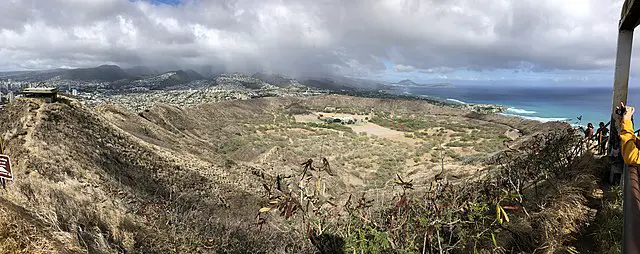
Diamond Head State Monument is a must-visit destination on the island of Oahu, Hawaii. This iconic landmark offers breathtaking views, a unique hiking experience, and a fascinating history that will captivate visitors. With its distinctive profile and panoramic vistas, Diamond Head is a true gem of the Hawaiian Islands.
Rising 760 feet above sea level, Diamond Head is a volcanic tuff cone that was formed over 300,000 years ago. Its name, “Diamond Head,” was given by British sailors in the 19th century who mistook the sparkling calcite crystals on its slopes for diamonds. Today, it is a popular attraction known for its natural beauty and panoramic vistas of Waikiki and the Pacific Ocean.
One of the main draws of Diamond Head is the exhilarating hiking trail that takes visitors to its summit. The trail begins within the crater and winds its way up through a series of switchbacks and steep inclines. As you ascend, you’ll pass through a tunnel and emerge onto the rim of the crater, where the true beauty of Diamond Head unfolds before you.
The hike to the summit is approximately 1.6 miles roundtrip and is considered moderate in difficulty. It offers a rewarding challenge for hikers of all levels, and the panoramic views from the top make it well worth the effort. Along the way, you’ll encounter bunkers, pillboxes, and other remnants of the area’s military history, as Diamond Head was once an important coastal defense site.
As you near the summit, you’ll be rewarded with breathtaking vistas that stretch from the turquoise waters of the Pacific Ocean to the bustling cityscape of Honolulu. On a clear day, you can even see the neighboring islands of Molokai and Lanai in the distance. The view from the Diamond Head summit is truly awe-inspiring and provides an unparalleled perspective of Oahu’s natural beauty.
To ensure a pleasant and safe hike, it’s important to come prepared. Wear comfortable walking shoes, bring plenty of water, and wear sun protection, as the trail offers little shade. It’s also recommended to start your hike early in the morning to avoid the midday heat and crowds.
Aside from the hiking trail, Diamond Head State Monument also features picnic areas and informative displays that provide insights into the geological and cultural significance of the area. Take your time to explore the crater and learn about the unique ecosystem that thrives within its walls.
Visiting Diamond Head State Monument is not just about the physical challenge or the breathtaking views; it’s also an opportunity to connect with the history and culture of the Hawaiian Islands. The monument holds deep cultural significance to the Native Hawaiian people, and it’s important to approach the site with respect and reverence.
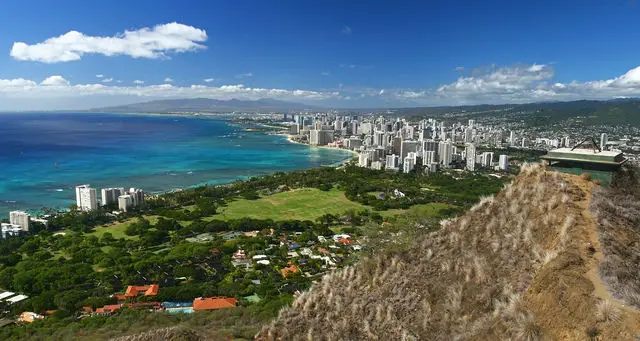
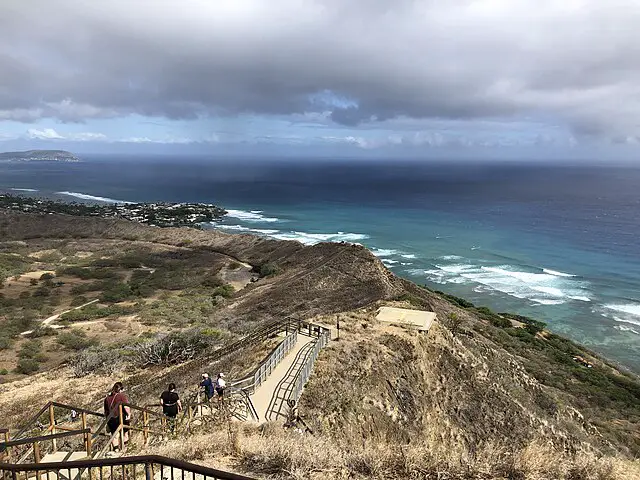


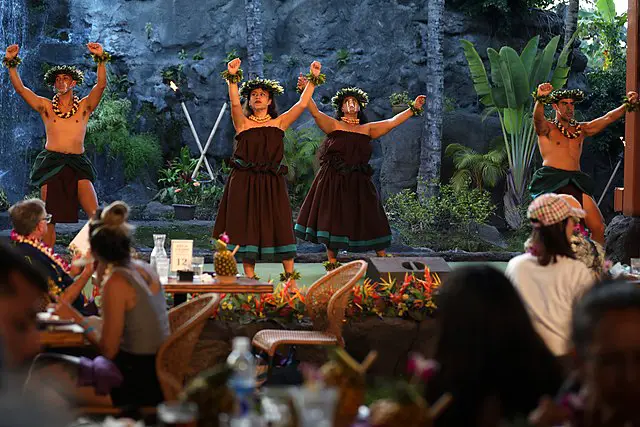
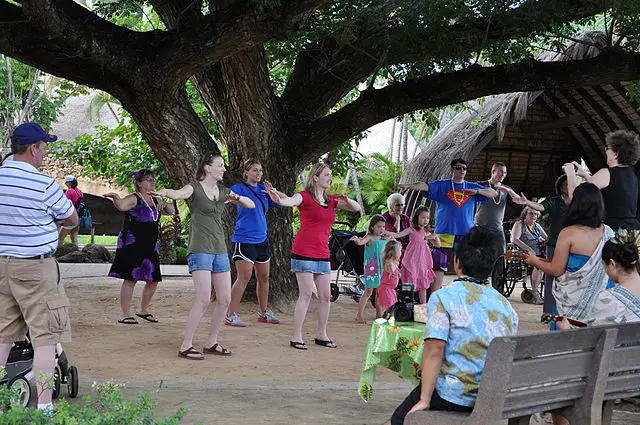
The Polynesian Cultural Center is an immersive attraction located on the island of Oahu, Hawaii. It offers visitors a unique opportunity to experience the rich cultures and traditions of the Polynesian islands in a single, captivating setting. Spanning over 42 acres, this cultural center showcases the customs, music, dance, and arts of Polynesia through interactive exhibits, live performances, and educational presentations.
As you enter the Polynesian Cultural Center, you are greeted by a warm aloha and a sense of stepping into a world of diverse island cultures. The center is divided into different “villages,” each representing a specific Polynesian culture, including Hawaii, Samoa, Tonga, Fiji, Tahiti, and Aotearoa (New Zealand). Each village is staffed by knowledgeable and friendly ambassadors who are eager to share their heritage and engage visitors in cultural activities.
The center offers a variety of experiences that allow visitors to immerse themselves in Polynesian culture. You can learn the art of traditional Samoan tattooing, try your hand at weaving a basket in the Hawaiian village, or participate in an interactive drumming session in the Tahitian village. There are also opportunities to witness authentic ceremonies, such as the captivating hula dance of Hawaii or the exhilarating fire knife dance of Samoa.
One of the highlights of the Polynesian Cultural Center is the Ali’i Luau, a traditional Hawaiian feast that combines delicious local cuisine with captivating entertainment. Here, you can savor a buffet of island favorites like kalua pork, lomi lomi salmon, and haupia (coconut pudding) while enjoying live music and hula performances. The luau provides a true taste of Hawaiian hospitality and is a memorable experience for visitors of all ages.
Another must-see at the Polynesian Cultural Center is the evening show, “Ha: Breath of Life.” This spectacular performance takes you on a journey through the Polynesian islands, telling the story of Mana, a young man in search of his identity and purpose. Through captivating music, dance, and breathtaking special effects, the show celebrates the essence of Polynesian culture and leaves audiences inspired.
Beyond the cultural experiences, the Polynesian Cultural Center is also committed to preserving and promoting the traditions and values of the Polynesian people. The center is operated by Brigham Young University-Hawaii, and a portion of the proceeds from ticket sales goes towards supporting the education of students from the Pacific Islands. By visiting the center, you are not only immersing yourself in a cultural adventure but also contributing to the preservation of Polynesian heritage.
When planning your visit to the Polynesian Cultural Center, it’s recommended to allocate a full day to explore the various villages, engage in cultural activities, and enjoy the shows and performances. The center offers a range of ticket options, including general admission, luau packages, and VIP experiences that provide additional perks and access.
To enhance your experience, consider booking a guided tour or taking part in a cultural workshop, where you can delve deeper into specific aspects of Polynesian culture. The Polynesian Cultural Center also offers dining options, including casual eateries and a snack bar where you can sample local treats like shaved ice and fresh pineapple.
